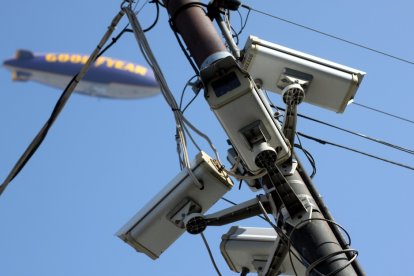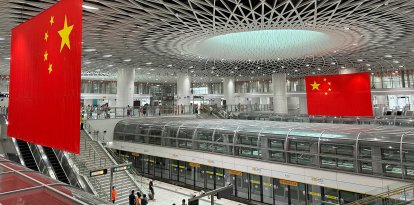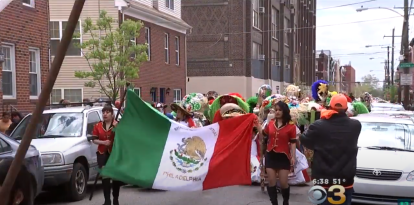Big brother in Los Angeles: one of the cities with the most cameras per inhabitant
China aside, Los Angeles ranks tenth in the world in the number of cameras monitoring the streets per number of citizens.

CCTV em Los Ángeles / Lord Jim (Flickr).
Paul Bischoff, an expert in video surveillance technology and privacy rights activist, wrote an article for Comparitech entitled "The World's Most Surveilled Cities." The totalitarian ideal of the government being able to monitor and control all subjects is being facilitated by the placement of street cameras, combined with facial recognition technology.
It is precisely a totalitarian state, China, that is number one in using cameras to monitor the population. According to a study conducted by IHS Markit, there are 540 million CCTVs in China, which means that there are 327.8 cameras per 1,000 inhabitants in the Asian dictatorship.
China and India
On a list of the top ten cities in the world based on the number of cameras per 1.000 people, all ten would most likely be Chinese. However, it is not possible to know the exact number for each city in that country, which is why they have all been grouped in first place.
Apart from Chinese cities, second place goes to Indore in India, with just over 200,000 cameras for 16,349,831 inhabitants, making that 62.52 cameras per 1,000 inhabitants.
The next three on the list are also from India: Hyderabad, Delhi, and Chennai. Sixth place is held by the Asian city Singapore. The seventh is Moscow, the capital of a country spread out among two continents, Asia and Europe, followed by Baghdad, which is in the same time zone.
Los Angeles
As we move down the list, we move further west: London is ninth (13.35 cameras per 1,000 inhabitants), St. Petersburg (12.65), and Los Angeles (8.77 cameras per 1,000 inhabitants).
In democratic countries, the main use of street surveillance cameras is to fight crime. However, it does not seem to be very effective. Bischoff includes a graph comparing camera usage data with crime data, and there is no correlation between the two. "Generally speaking, more cameras do not necessarily reduce crime rates."
Cameras do not reduce crime
Of course, being one of the first Western cities to self-police has not made it one of the safest cities in the United States. On the contrary, it is one of the 10 most dangerous sanctuary cities in the country, due to having adopted in the fight against crime, such as defunding the police force.
None of this prevents San Francisco, another one of California's major cities, from adopting another Orwellian policy. The city has passed an ordinance that will allow police to access private video surveillance cameras without a warrant. According to the Electronic Frontier Foundation:
RECOMMENDATION




















